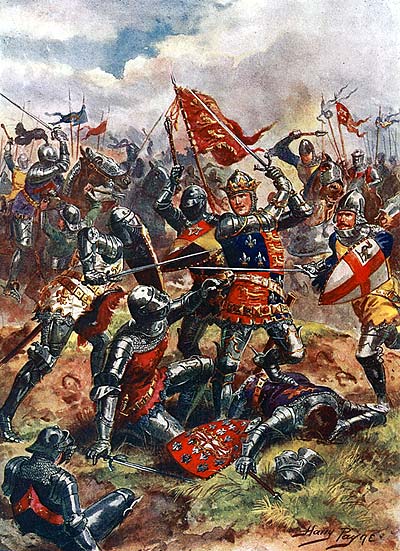
Friday 25th October 1415 was the feast day of St Crispin & St Crispinian.
The English were silent as they gathered to face the French.
The French expected to win. But their command was poor. They had camped on ploughed land which turned to churned mud after the night’s rain. So keen were their officers for glory and the best spoils for ransom that they advanced with their men in the vanguard which was far larger than the rearguard. And they were over-confident: crossbow men were told they would not be needed, or positioned in the rearguard where their bolts did little damage to the English.
The field was narrow with woods on either side. Henry V used these to hide archers and men-at-arms. He placed most of his archers in a wedge formation, with sharpened stakes in the ground in front of them, hoping to force the French to ride into a decreasing corridor to reach him.
The English expected the French to attack. But the French held back, hoping for yet more men to join them; they knew that the English were tired, hungry and sick. Then Henry V took the unbelievable decision to attack.
The English archers upped their stakes and repositioned them within 200 yards of the French front line, bringing the French within range of English longbows. This was a gamble as the French cavalry could cover 100 yards in 10 seconds. But the English and Welsh archers could shoot a dozen or more arrows in a minute. When the French charged, they met a sea of arrows.
The French were taken by surprise. Many had left the field to feed the horses or to get warm. The archers did their job. Horses were killed, making a barrier to others; then, getting within 30 yards, the archers could kill the riders. Frightened horses turned and ran, charging into those behind. Mayhem reigned. The battled lasted just two hours.
Last : From Betchworth to Agincourt

